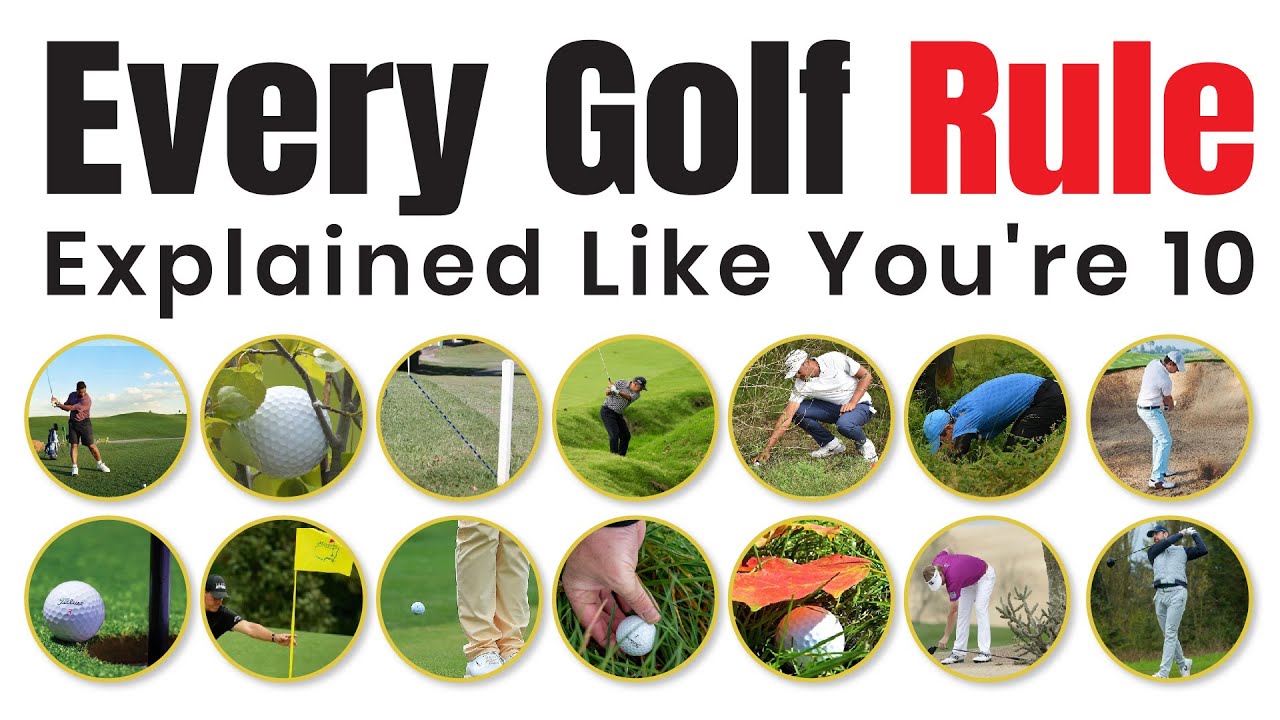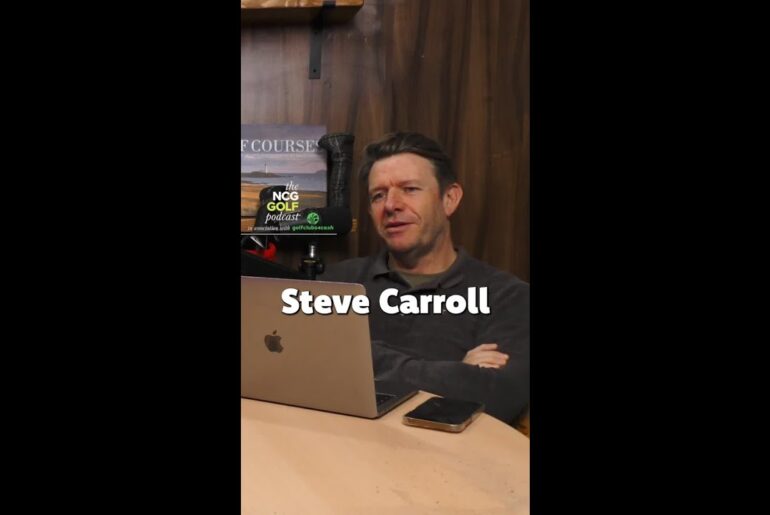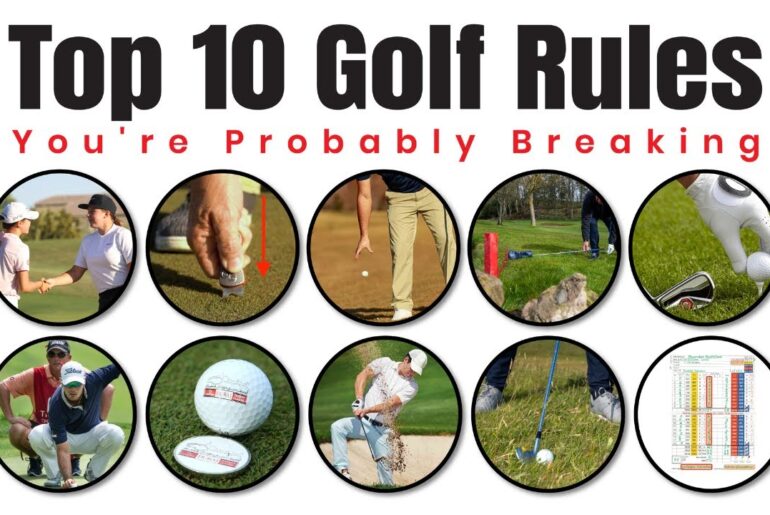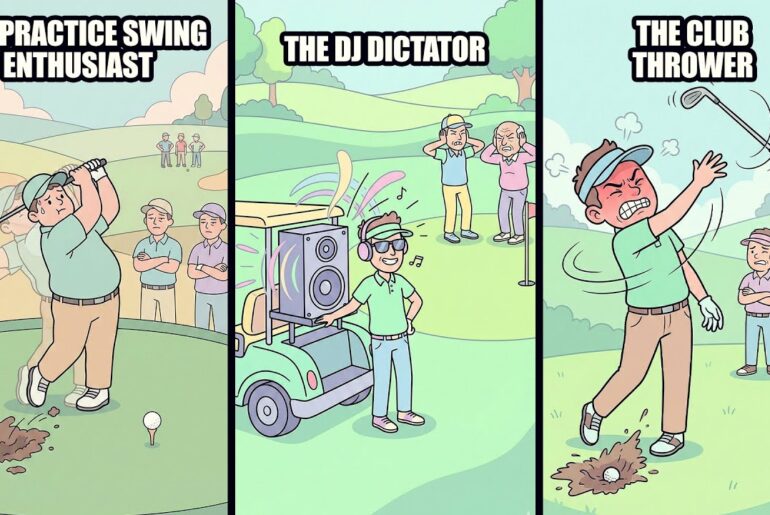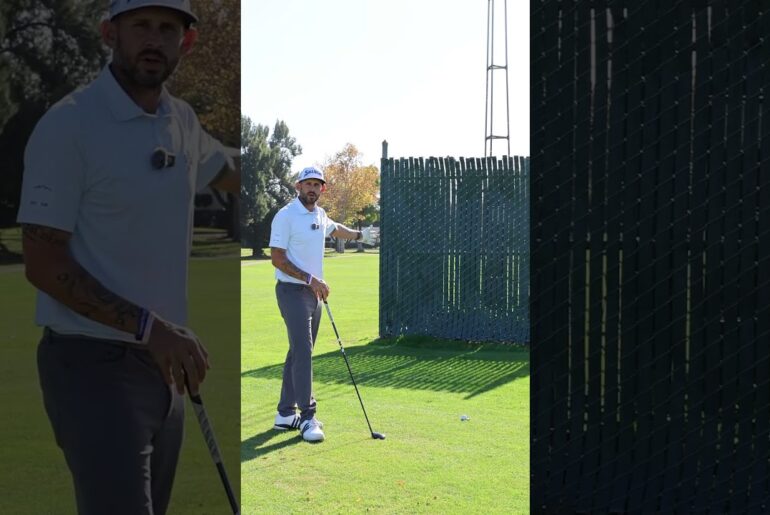Every Golf Rule Explained Like You’re 10 (No Jargon, Just Golf ✅)
Golf rules can feel confusing—but they don’t have to be. In this video I break down the most important rules in plain English so you know what to do on the course, avoid penalty strokes, and keep your round moving. Perfect for beginners, juniors, and any golfer who wants a quick, clear refresher.
What you’ll learn (fast & simple):
Teeing Off — where you can and can’t tee it 🔺
Play It As It Lies — what’s allowed… and what’s not
Out of Bounds vs. Lost Ball — stroke & distance made easy
Penalty Areas (Red vs. Yellow) — the right drop options
Unplayable Lie — your 3 (and sometimes 4) choices
Bunkers — what you can touch, what you can’t 🏖️
Putting Green — marking, cleaning, repairing, spike marks
Flagstick — leave it in or take it out? Your call now
Dropping the Ball — knee-height, relief area, re-drop basics
Provisional Ball — how to save time the right way
Loose Impediments vs. Obstructions — free relief rules
Free Relief — cart paths, GUR, abnormal conditions
Ready Golf — when to play out of turn (and when not to)
Why this helps
Knowing the basics = fewer penalties, faster rounds, and less awkward “uh… what now?” moments with your group.
👍 Like if this cleared things up
🔔 Subscribe for simple, no-BS golf lessons every week
💬 Comment: Which rule confuses you most?
Golf has a lot of rules, and sometimes they can seem complicated or confusing. But these rules aren’t just there to make the game harder. They’re there to make it fair and fun for everyone. In this video, I’ll explain the most important golf rules in a way that’s easy to understand. Whether you’re just starting out or you’ve been playing for years, knowing these rules will help you play the game the right way and avoid those awkward moments on the course. Let’s start with the most basic rule of all. How to start the game. Teeing off. Teeing off is how you start playing each hole. You have to place your ball between the tea markers or up to two club lengths behind them, but never in front of them. What makes this rule special is that this is the only time in golf when you’re allowed to place your ball on a tee, raising it off the ground. On every other shot, you have to play the ball as it lies. In stroke play, if you start a hole from outside the teeing area, it’s a two-stroke penalty, and you must correct before starting the next hole. Failure to correct means disqualification. In match play, if you start from outside the teeing area, there’s no penalty, but your opponent may cancel the stroke and require you to replay from inside the teeing area. The most common mistake is teeing up in front of the markers, which is a two-stroke penalty. If you realize your mistake before hitting, you can move your ball with no penalty. Remember, between or behind the markers, never in front. Playing the ball as it lies. Play it as it lies is one of the most fundamental rules in golf. It means you have to hit your ball from wherever it ends up without improving your situation. What makes this rule important is that it keeps the game fair. Everyone faces the same challenges whether good or bad. You can’t move your ball out of a divot in the fairway or push down grass behind your ball to make your shot easier. Patrick Reed got in trouble in 2019 when cameras caught him improving his lie in a sandy waist area by moving sand away from behind his ball during a practice swing. The biggest mistake people make is casually moving their ball to a better spot without taking a penalty. If you need to move your ball, you can, but it usually costs you one stroke. Remember, play it where it lands or take the penalty. Out of bounds. Out of bounds means your ball has gone beyond the boundaries of the course, usually marked by white stakes or lines. If your ball goes out of bounds, you get a one stroke penalty, and must replay from where you last hit. What makes this rule tough is that you have to go all the way back to your previous spot. This is called stroke and distance because you lose both a stroke and the distance you hit. At the 2017 British Open, Jordan Spe hit a shot so far offline that he had to play his next shot from the driving range, which was actually still in bounds. Many casual golfers play out of bounds, like a water hazard, dropping where the ball went out and taking a penalty stroke. But the official rule requires you to go back to the previous spot. In 2019, a new local rule was introduced for casual play that allows you to drop near where your ball went out of bounds for a two-stroke penalty instead of going back. This model local rule E5 is for casual pike committee adopted play not for elite competitions. Penalty areas. Penalty areas formerly called water hazards are lakes, ponds, streams, marshes, deserts, or other areas marked by red or yellow stakes. If your ball goes in a penalty area, you have options for where to drop with a one-stroke penalty. What makes penalty area rules helpful is that they give you choices. For yellow marked areas, you can either go back to where you last hit or drop on a line extending from the hole through where your ball entered the water. For red marked areas, you also have the option to drop within two club lengths of where the ball entered the hazard. Plus, stroke and distance is always available. Pros are meticulous about where the ball crossed the edge to get the right relief, often spending time to find the exact entry point for the most advantageous drop. The most common mistake is dropping in the wrong place. Remember, for yellow areas, it’s either back to where you last hit or on a line extending back from the hole through the entry point. For red areas, you also have the option to drop within two club lengths of the entry point, no closer to the hole. Unplayable lie. An unplayable lie is when your ball is in such a bad spot that you decide you can’t hit it. You may declare your ball unplayable anywhere except in a penalty area. What makes this rule helpful is that it gives you an escape when you’re in a terrible spot, like under a bush or against a tree. In the general area, you have three one-stroke options. Stroke and distance, two club lengths, or back on the line. In a bunker, those same options must stay in the bunker for one stroke. Or you may take back on the line outside the bunker for a two-stroke penalty, 2019 edition. Sergio Garcia once declared his ball unplayable when it ended up in a tree during the 2013 Arnold Palmer Invitational. He actually climbed the tree to identify his ball before taking his drop. The key thing to remember is that only you can declare your ball unplayable. It’s your choice. But once you do, you must take one of the relief options and accept the penalty. Lost ball. A lost ball is when you can’t find your ball within 3 minutes of starting to look for it. If your ball is lost, you get a one-stroke penalty and must replay from where you last hit. What makes this rule challenging is that like out of bounds, you have to go all the way back to your previous spot. This stroke and distance penalty can be frustrating, especially if you thought your ball was in a good spot. Many casual golfers play a gallery rule, dropping a ball near where they think their ball should be with a one-stroke penalty. But the official rule requires you to go back to the previous spot. Like with out- of bounds, the 2019 local rule allows casual golfers to drop near where the ball was lost for a two-stroke penalty instead of going back. This model local rule E5 is for casual committee adopted play, not for elite competitions. Bunkers. Bunkers are specially prepared areas filled with sand. They have specific rules about what you can and can’t do while your ball is in a bunker. In bunkers, you can remove loose impediments and touch the sand. Incidentally, you still can’t one, deliberately test the sand. Two, touch sand right in front of or right behind the ball with club hand including in the back swing. or three, make a practice swing that touches the sand. Dustin Johnson lost his chance to win the 2010 PGA Championship when he grounded his club in what he thought was a dirt area, but was actually a bunker, receiving a two-stroke penalty. The most common mistake is touching the sand with your club before your shot in a way that improves your conditions. If you decide your ball is unplayable in a bunker, you can take relief outside the bunker for a two-stroke penalty. Putting green. The putting green has its own set of rules. Once your ball is on the green, you can mark it, lift it, clean it, and replace it. You can also repair almost any damage on your line, including ball marks, shoe damage, and even spike marks. What makes green rules helpful is that they let you fix problems that might affect your putt. You can also remove loose impediments like leaves or insects without penalty. At the 2019 US Open, Bryson Desambo was seen using his putter to tap down spike marks on his line, which was previously against the rules, but became legal in 2019. The most common mistake is not marking your ball properly before lifting it. Always place your marker behind the ball before picking it up, and replace the ball in front of the marker. Also, remember that you can’t test the green by rolling a ball or scraping the surface. Flag stick. The flag stick rule is about whether to leave the flag in or take it out when putting. Since 2019, you’re allowed to leave the flag stick in the hole when putting from anywhere, even on the green. What makes this rule change interesting is that it speeds up play and gives players a choice based on their preference. Some players find it easier to see the hole with the flag in, while others prefer it out. Adam Scott is known for leaving the flag stick in for most of his putts since the rule change, believing it helps him make more putts. Before 2019, if your ball hit the flag stick while putting from the green, you received a two-stroke penalty. Now, there’s no penalty whether you leave it in or take it out. It’s completely your choice. Dropping the ball. Dropping the ball is how you put your ball back in play after taking relief. Since 2019, you must drop from knee height, letting the ball fall straight down without throwing, spinning, or rolling it. What makes this rule important is that it ensures a consistent and fair way to return your ball to play. The ball must land in and come to rest in the relief area, which is usually one or two club lengths from a reference point, depending on the situation. Right after the 2019 change, plenty of players instinctively dropped from shoulder height and had to redrop. If you notice before playing, just redrop with no penalty. If you play it, it’s a one-stroke penalty. If the ball also ended outside the relief area and you play it, that’s a two-stroke penalty for playing from the wrong place. The most common mistake is dropping from shoulder height, the old rule, instead of knee height. If you drop incorrectly but catch your mistake before hitting, you can redrop without penalty. If you don’t catch it, it’s a onestroke penalty. Provisional ball. A provisional ball is a second ball you play when you think your first ball might be lost or out of bounds. It saves time because you don’t have to walk all the way back if your original ball is indeed lost. What makes this rule helpful is that it keeps play moving. Instead of waiting to see if your ball is lost, then walking all the way back to hit again. You can hit a provisional right away. Don’t play your provisional from nearer the hole than where the original is likely to be, unless you’re ready to abandon the original. Once you do, the provisional becomes the ball in play. Jordan Spe is known for being quick to play provisionals when he’s uncertain about his ball, saving time and maintaining his rhythm. The key thing to remember is that you must announce that you’re hitting a provisional ball before doing so. If you don’t declare it as a provisional, your second ball automatically becomes the ball in play with a stroke and distance penalty, even if you find your original ball. Loose impediments. Loose impediments are natural objects like leaves, twigs, stones, or insects that aren’t fixed or growing. Loose impediments, leaves, twigs, stones, can be removed anywhere. If your ball moves while removing them, you’ll usually add a stroke and replace it. But on the putting green, there’s no penalty. Just replace the ball. What makes this rule helpful is that it lets you clear away natural debris that might interfere with your shot. However, if your ball moves while you’re removing a loose impediment, you get a one-stroke penalty and must replace the ball. Tiger Woods once had fans help him move a massive boulder that was considered a loose impediment during the 1999 Phoenix Open, allowing him a clearer shot. The most common mistake is confusing loose impediments with obstructions. Loose impediments are natural objects, while obstructions are artificial objects like rakes or cart paths, which have different rules for relief. Free relief situations. Free relief means you can move your ball without a penalty stroke in certain situations. These include man-made obstructions like cart paths, sprinkler heads, or rakes, ground under repair, or abnormal course conditions. What makes free relief fair is that these obstacles aren’t considered part of the normal challenge of the course. You get to drop within one club length of the nearest point of relief, no closer to the hole. Rory Mroy once got free relief when his ball landed near a sprinkler head near the green, allowing him to drop away from it and make a crucial birdie. The most common mistake is taking relief incorrectly. You must first find the nearest point of complete relief where the obstruction no longer interferes. Then drop within one club length of that point, no closer to the hole. Ready golf. Ready golf means playing when you’re ready rather than strictly following the farthest from the hole plays first rule. It’s encouraged in stroke play to speed up the game. What makes Ready Golf helpful is that it prevents a lot of waiting around. If someone is taking time to decide on a shot and you’re ready to play, you can go ahead with their permission. The PGA Tour has embraced aspects of ready golf to combat slow play with players often hitting when ready instead of strictly following traditional order. The key thing to remember is that ready golf is great for casual and stroke play, but in match play, where you play hole by hole against an opponent, the traditional order of play is still important and strategic. So, there you have it. The most important golf rules explained. Remember, these rules aren’t just there to make the game harder. They’re there to make it fair and consistent for everyone. You don’t need to memorize every detail of the rule book, but understanding these basics will help you play confidently and avoid penalties. Golf is more fun when you know what you’re doing and your playing partners will appreciate that you understand the rules. Hit that like button if this helped you understand golf rules better.

